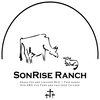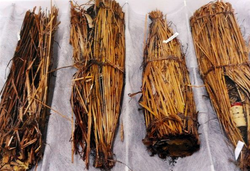The Air Quality Index (AQI), used to measure smog and pollution, ticked up to 300+ in my little hometown. Hey, at least we made national news!
This is the AQI range where mothers and the elderly are told to leave town. Folks are given masks at the local clinic for free and just about everyone you meet looks as if they've just finished a memorial service with puffy, red eyes.
As a young man, I well remember my first wildfire. It was in 1987 (I know, I just dated myself). My father, a Helicopter Logging Pilot for 30 years, was called off his logging assignment, to dump water on a wildfire near our hometown. The teams, both ground and air, extinguished the fire in a few days and returned to logging.
Back then, firefighting with a Helicopter was a narrow occupation. He was one of the first pilots trained for it - up to that point he had only used a "Bambi-Bucket" (the water tote under a helicopter) a few times in his whole career. It would be another two or perhaps three years before he would be ordered to fight his next fire.
By the time he retired, in the late 90's, fire fighting accounted for three quarters of the annual revenue for his company. He often commented "we used to log these forests, now we get paid by the goverment when they burn"
"A forrest is a living ecosystem and must be pruned. Herbivores are natures vinedressers, remove them and the forest will cease to grow vibrantly, decay and expel carbon - keep it trimmed and it will sequester carbon"
I've found a fascinating TEDTALK by Paul Hessburg on this subject. In about 15 minutes you too, can understand what is really happening.
Well, I can tell you they weren't playing with matches. They intuitively knew that the Buffalo, their primary source of protein and central to their way of life, grazed in silvopasture - widely spaced trees interspersed with perennial grasslands. Thus, burning the forest served two purposes; first, this allowed the brush that had collected and dead trees since the last disturbance to be eliminated.
Secondly, these wise stewards of the land (much wiser than their successors, I might add) understood the simple natural maxum - "death creates life".
Or, as America's favorite Farmer, Joel Salatin puts it "everything is either eating or being eaten"
Perennial grasses store their energy in their roots, below the surface. Annuals - crops that require plowing and planting, store energy in their seeds. A perennial has 2/3rds or more of its structure below ground and 1/3 above. Thus a wildfire would not destroy the perennial plant life, it would envigorate it.
The opposite would be true of annual crops.
Stay with me here - if I come and light your cornfield, an annual crop, on fire, you will lose all your stored energy in the ensuing inferno, much like Sampson did in the biblical book of Judges, when he lit a few foxes on fire and sent them running through the Philistines wheat fields. Have you ever uprooted a corn stalk? They are about foot deep.
Not so with perennial grass.
Now, with that in mind, take a look a this picture...
What pretell do plant roots do?
Bingo, they transport minerals and nutrients to the surface - something cattle can sense, seek out and love to eat.
In other words, the Native Americans were doing good - pruning, vine dressing, stewarding the land - with the ultimate end state of attracting large Herbivorous Grazers back into the silvopasture and feeding them with the richest, deeply-mined, subterranean minerals they could get, all transported for free by well meaning perennial grasses.
Those grasses were pressed into service by being burned, grazed or trampled. They followed their one true instinct - rebuild for further propagation. It's akin to lifting weights at the gym for you and me. And without the weights - the whole symbiotic system falls apart. Without the grazers, the plants don't propagate. They die and build up flammable fuels. Increasing carbon in the atmosphere.
Ok, now for the punchline.
The Native Americans were unable to control their herds. They didn't have the benefit of portable water troughs, mobile electric fence and salt licks that can be moved from field to field. Most importantly, their herds were not trained - heck, they weren't even domesticated. They were at the mercy of the herd mentality - seeking safety from predation, better grass, deeper springs. It was up to the herd.
Not so, us.
Not modern man.
We can control livestock with biomimicry. Yes, biomimicry (haven't heard that before have ya?) It means to copy nature. How? By using systems that impersonate the predator, like a portable electric fence, that delivers a harmless tickle to the back end of a Cow when it brushes up against the fence wire. Or, to entice the herd to move by offering better feed, salt or water.
Move where, you say?
To an overgrown forest that needs trimmed before it erupts in a fiery inferno - that's where!
If cattle graze a forest they remove the undergrowth, the stuff that burns real hot and boils the sap in trees - killing them instantly. They trample the branches that have fallen, reducing the fast burn fuels and speeding up the carbon-cycle. On top of that, the cattle grow - yes - grow.
Grow what?
Milk, meat, hide - all good stuff.
And at what cost?
Free.
In fact, opposite of free. Think about it. I told you my Dad's company earned three-quarters of all their revenue from fire-fighting in the late 90's. That was 12 Million dollars! And that was "back then".
We are spending millions per hour fighting fires right now. This could all be done for free with good, properly trained cattle managers, and the correct eco-regenerative-carbon-sequestration-fire-prevention mentality from our forest management.
Why not?






 RSS Feed
RSS Feed